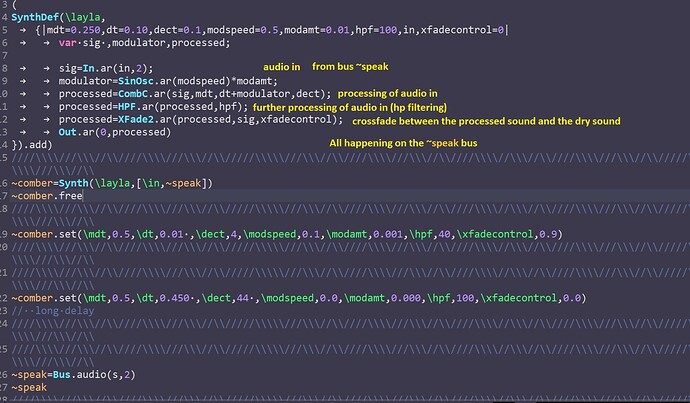But all the dry wet mixing is happening on the same bus
The xfade ugen is in the FX synthdef that processes incoming synths
Setting xfadecontrol to 1 =totally dry , 0=50/50% ,-1=totally wet and it all happens on the same bus .
Ofcourse the bus send it;s all to back to 0
Perhaps you’re mistaken with send efffects for pure wet mixing, in that case you’re right
Either way , the dry-wet mixing in my posted code is all happning on a dedicated bus .
The main synthdef effect has three variation synth effects (not sets ) which all have their dedicated bus
Just load any of your instrument through the posted code and you’ll see
I also suspect that the osciloscope only shows the audio that is going into that bus , not the actual processing of the audio ON that bus
Which I have demonstrated a few posts back
A dry saw wave goes to bus 10 , highpass filter synthdef receives on bus 10 for HIGH PASS filtering
The osciloscope still shows a saw wave with unfiltered harmonics on bus 10
About serial routing , I guess you’re right about that
